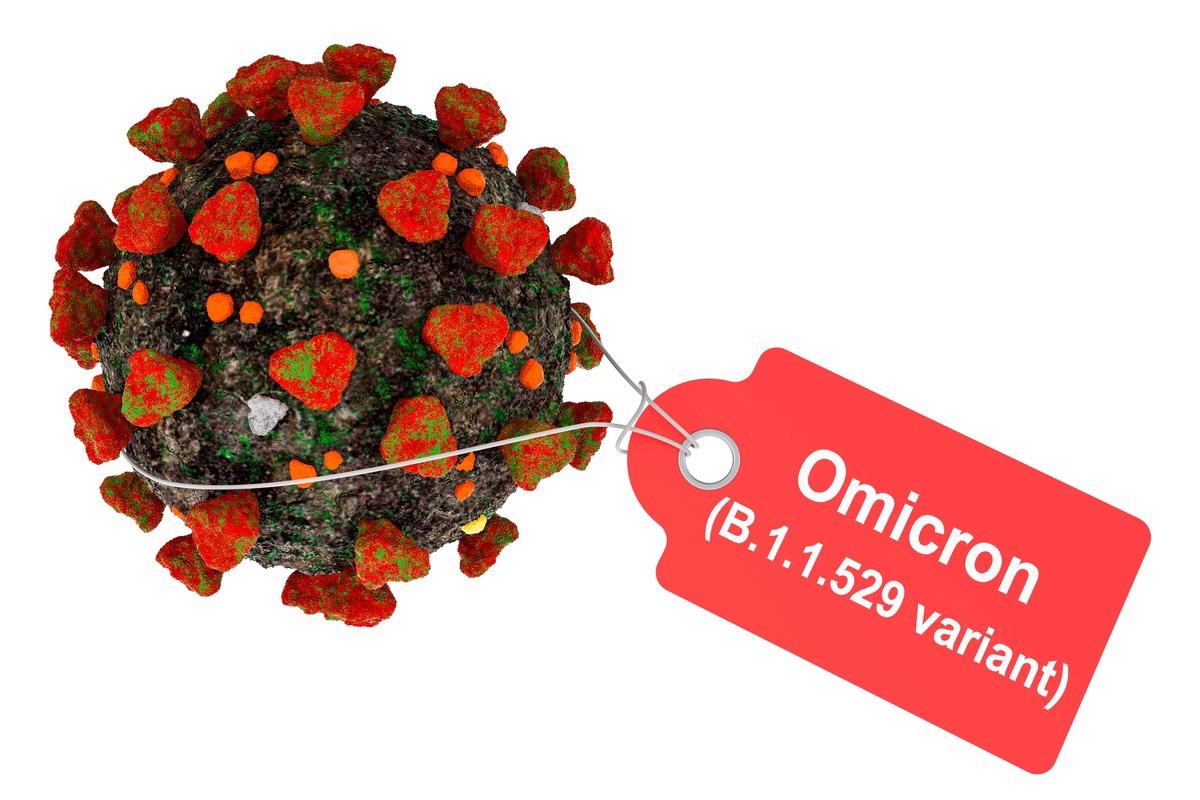In a study posted to the bioRxiv* pre-print server, a team of researchers evaluated potential public health implications of the emerging severe acute respiratory syndrome coronavirus 2 (SARS-CoV-2) variant of concern (VOC) Omicron, using a rapid computational prediction platform.
 Study: SARS-COV-2 Omicron variant predicted to exhibit higher affinity to ACE-2 receptor and lower affinity to a large range of neutralizing antibodies, using a rapid computational platform. Image Credit: natatravel/Shutterstock
Study: SARS-COV-2 Omicron variant predicted to exhibit higher affinity to ACE-2 receptor and lower affinity to a large range of neutralizing antibodies, using a rapid computational platform. Image Credit: natatravel/Shutterstock
Omicron’s ability to alter recognition by SARS-CoV-2 vaccination or infection-induced antibodies could make all the currently available countermeasures inadequate, including monoclonal antibodies and vaccines. The global scientific community is highly concerned about the emergence of Omicron with several mutations in its spike (S) protein, which increases its ability to evade immunity from vaccines or protection from neutralizing antibodies.
Although currently used in vitro methods rapidly examine the stabilized expression of Omicron’s mutated S protein to assess its affinity and neutralization to antibodies and receptors, they usually take several weeks to provide results. Therefore, developing rapidly available and reliable prediction methods to help gather grounding data for customized responses to rapidly emerging SARS-CoV-2 VOCs is critical.
The study
The researchers developed an approach referred to as Structural Fluctuation Estimation (SFE) for the present study. Initially, they constructed structural models of the RBD-ACE2 and RBD-Fab complexes for evaluation. Next, they performed minimization and relaxation for each constructed complex and sampled ~60 structural conformations using high-performance computing systems.
The model of the modified structure of Omicron’s S receptor-binding domain (RBD) was examined, at the interface with the human angiotensin-converting enzyme 2 (ACE-2) receptor, to evaluate the binding affinity changes between Omicron, ACE-2, and other known SARS-CoV-2 neutralizing antibodies.
The researchers computed the distribution of binding free energies (ddG’s) across several conformations (~60 in number) for all the evaluated RBD-ACE2 and RBD-Fab complexes providing a binding affinity estimate (both to ACE-2 and neutralizing antibodies), together with error and confidence levels. They also calculated binding affinity for 13 other VOCs and 54 neutralizing SARS-CoV-2 antibodies using the SFE approach.
Results
Omicron has over 30mutations in the S protein, and 15 of those are in the RBD, while other SARS-CoV-2 VOCs do not have more than 15 and three mutations in the S and RBD, respectively. Further analysis showed that seven of the 15 Omicron RBD mutations occurred at the ACE-2 cell receptor interface, indicating their crucial role in enhancing binding to ACE-2. Binding affinity estimates of Omicron RBD-ACE-2 indicate that two RBD mutations, Q493K/R and N501Y, contribute to enhanced ACE-2 binding, nearly doubling the ddG’s calculated for other VOCs.
The ddG values of 0.2, 0.5, and 1.0 were applied as thresholds for a viral escape to study the impact on RBD- Fab binding of Omicron, Delta, and Gamma VOCs with 54 known SARS-CoV-2 neutralizing antibodies. The results showed that the Omicron might have an increased ability to evade binding with FABs over other variants, including the Delta variant. Subsequently, binding affinity estimates of SARS-CoV-2 neutralizing antibodies showed that Omicron significantly degraded binding for more than 50% of neutralizing SARS-CoV-2 antibodies and roughly double the antibodies than the currently dominant Delta variant.
Conclusions
The study results highlight that Omicron has an increased affinity to ACE-2 receptors, therefore, has increased infectivity, viral load, and transmissibility compared to other VOCs, including the Delta variant. Further detailed experimental and epidemiological studies to understand these changes in Omicron's affinity are required in the future. The study results also indicate that several known neutralizing antibodies show significantly weak binding to the Omicron, compared to other VOCs.
One of the limitations of the computational affinity predictions is that they are based on a predicted structure of Omicron and ACE-2, and evaluate binding interactions in silico, which do not fully capture all aspects of the real world. Another limitation of this computed analysis is that it examines single RBD-Fab or RBD ACE-2 complexes, not the complete S protein and this analysis is restricted to the Fab variable domains of the evaluated RBD-Fab complexes.
While the computational platform of the study is robust enough to handle a large number of binding complexes and capable of producing reproducible results within a few days, its predictions only quantitatively assess the risk due to Omicron VOC mutations. In the future, studies performing detailed experimental characterization and real-world assessment are required to help make informed public health decisions.
*Important notice
bioRxiv publishes preliminary scientific reports that are not peer-reviewed and, therefore, should not be regarded as conclusive, guide clinical practice/health-related behavior, or treated as established information.
- Adam Zemla, Thomas Desautels, Edmond Lau, Fangqiang Zhu, Kathryn Arrildt, Brent Segelke, Shankar Sundaram, Daniel Mello Faissol. (2021) SARS-COV-2 Omicron variant predicted to exhibit higher affinity to ACE-2 receptor and lower affinity to a larger range of neutralizing antibodies, using a rapid assessment platform. bioRxiv. Doi: https://doi.org/10.1101/2021.12.16.472843 https://www.biorxiv.org/content/10.1101/2021.12.16.472843v1
Posted in: Medical Research News | Medical Condition News | Disease/Infection News
Tags: ACE2, Angiotensin, Angiotensin-Converting Enzyme 2, Antibodies, binding affinity, Cell, Coronavirus, Coronavirus Disease COVID-19, Enzyme, immunity, in vitro, Protein, Public Health, Receptor, Respiratory, SARS, SARS-CoV-2, Severe Acute Respiratory, Severe Acute Respiratory Syndrome, Syndrome

Written by
Neha Mathur
Neha Mathur has a Master’s degree in Biotechnology and extensive experience in digital marketing. She is passionate about reading and music. When she is not working, Neha likes to cook and travel.
Source: Read Full Article



